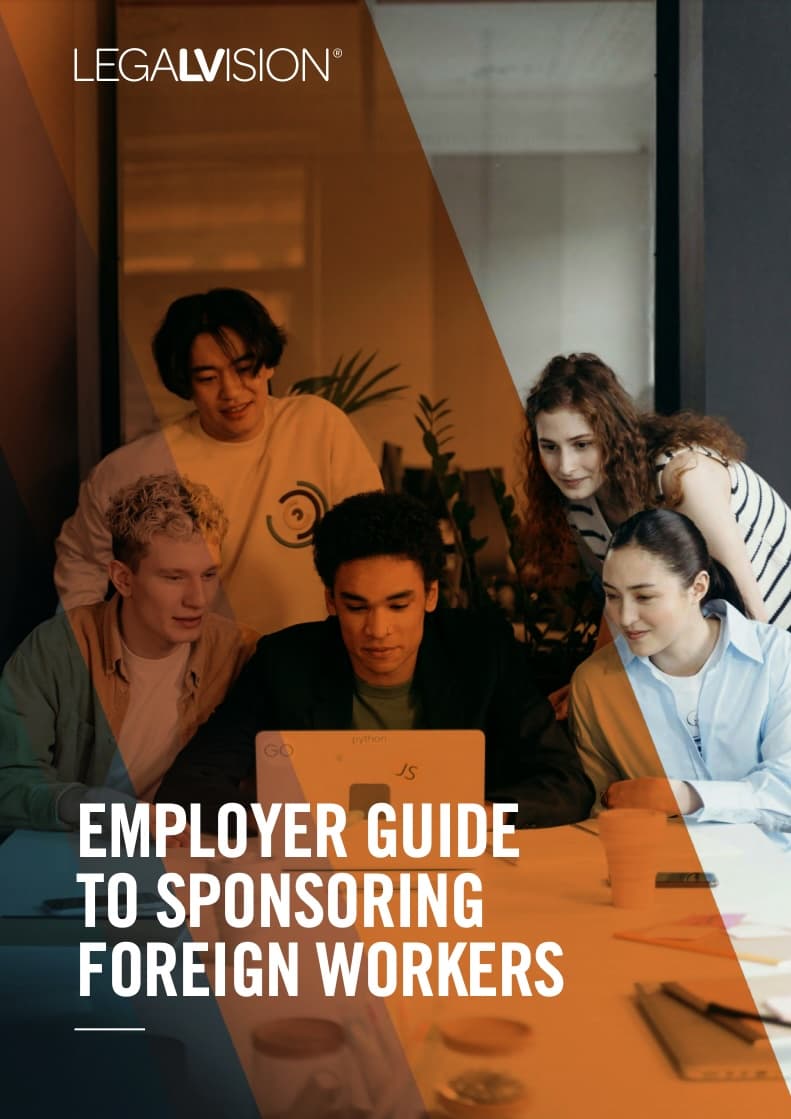In Short
- The new Skills in Demand (SID) visa (subclass 482) replaces the TSS visa from 7 December 2024 and aims to address skill shortages with greater flexibility.
- It introduces the Core Skills Occupation List (CSOL) and new income thresholds, providing streamlined options for sponsoring businesses.
- Enhanced pathways to permanent residency offer increased mobility for skilled workers.
Tips for Businesses
To maximise the benefits of the SID visa, review the new Core Skills Occupation List to identify eligible roles within your company. Consider leveraging the flexibility of the Specialist Skills stream for high-salary positions. Stay updated on ongoing policy refinements to align your recruitment strategy with dynamic visa requirements.
Table of Contents
The Australian government has announced a significant overhaul of its skilled migration system with the introduction of the Skills in Demand (SID) Visa (subclass 482). This SID visa commenced on 7 December 2024, replacing the Temporary Skill Shortage (TSS) visa. The reforms, first announced in ‘The New Migration Strategy’ in December 2023, aim to address critical skill shortages more effectively and provide greater flexibility for both employers and skilled workers. This article outlines the differences between the SID and TSS visas, requirements for the SID visa and pathways to permanent residency.
What Reforms Have Taken Place?
The SID visa was introduced as part of the Migration Amendment (2024 Measures No. 1) Regulations 2024, which amends the Migration Regulations 1994. The new visa scheme came into effect on 7 December 2024, marking a significant shift in Australia’s approach to skilled migration.
Differences Between TSS and SID
1. Visa Streams
The SID visa introduces three distinct streams, replacing the previous Short-term and Medium-term streams of the TSS visa:
- Specialist Skills Stream: For high-salary roles ($135,000+) in any ANZSCO occupation, excluding those in ANZSCO Major Groups 3, 7, and 8.
- Core Skills Stream: For occupations on the Core Skills Occupation List (CSOL) with a minimum salary of $73,150.
- Labour Agreement Stream: Carried over from the TSS visa.
2. Occupation Lists
The introduction of the Core Skills Occupation List (CSOL) consolidates multiple occupation lists into a single framework. It covers 456 occupations across critical sectors. This removes 125 occupations from the previous TSS lists. However, it also includes 16 new or changed ANZSCO occupations.
3. Work Experience Requirements
The SID visa reduces the required work experience from two years to one year of full-time or equivalent work experience in the past five years.
4. Income Thresholds
The Core Skills Income Threshold replaces the Temporary Skilled Migration Income Threshold (TSMIT) for the Core Skills stream. Additionally, the Specialist Skills stream introduces a higher threshold of $135,000.
5. English Language Requirements
The SID visa standardises English language requirements across both Specialist and Core Skills streams, requiring an IELTS score of 5.0 overall (minimum 5.0 in each band). This is consistent with the previous Medium-term stream of the TSS visa.
6. Caveats
The number of caveats has been reduced from 26 to 14, with some removed or combined to reflect changes in income thresholds and regional requirements.
Continue reading this article below the formRequirements of SID
To be eligible for the SID visa, applicants must meet the following key criteria:
- Occupation: The occupation must be on the CSOL for the Core Skills stream or meet the income threshold for the Specialist Skills stream.
- Work Experience: The applicant must have one year of full-time or equivalent work experience in the past five years.
- English Language Proficiency: They should achieve an IELTS score of 5.0 overall (minimum 5.0 in each band) or equivalent.
- Salary: This must meet or exceed the relevant income threshold, either the Core Skills Income Threshold or Specialist Skills threshold.
- Skills Assessment: This may be a requirement for certain occupations as specified in the relevant legislative instruments.
- Health and Character: The applicant must meet standard health and character requirements.

Sponsoring overseas workers as an Australian business is complicated. Let us simplify it for you with this free employer guide.
Pathways to Permanent Residence (Subclass 186)
The SID visa maintains and enhances pathways to permanent residency through the Employer Nomination Scheme (subclass 186).
Temporary Residence Transition (TRT) Stream
Applicants will be eligible after two years of holding a 457, 482 TSS, or 482 SID visa in the same occupation. Additionally, the requirement for two years with the same employer has been removed, increasing flexibility for visa holders.
The occupation must be the same as the most recently held 457, 482 TSS, or 482 SID visa, based on ANZSCO 2022.
Direct Entry (DE) Stream
This stream maintains the three-year work experience and positive skills assessment requirements. However, the occupation list for the DE stream is aligned with the new CSOL.
Is This a More Beneficial Scheme Than the Previous Regime?
The SID visa scheme offers several advantages over the previous TSS regime:
- Increased Flexibility: The Specialist Skills stream allows for high-salary roles across a broader range of occupations, not limited by occupation lists.
- Simplified Occupation Framework: The CSOL provides a clearer, more consolidated approach to identifying eligible occupations.
- Reduced Barriers for Early-Career Professionals: The lowered work experience requirement opens opportunities for younger or less experienced skilled workers.
- Enhanced Pathways to Permanency: Removing the same-employer requirement for the TRT stream offers visa holders greater mobility and career progression opportunities.
- Responsiveness to Economic Changes: Annual indexation of salary thresholds ensures the scheme remains aligned with market conditions.
Is There More Flexibility for Sponsoring Foreign Workers?
The SID visa scheme offers increased flexibility for Australian businesses to sponsor foreign workers and meet skills shortages:
- Broader Occupation Coverage: The CSOL’s comprehensive list of 456 occupations across critical sectors provides businesses with a wider pool of potential candidates.
- High-Salary Exemptions: The Specialist Skills stream allows businesses to sponsor high-earning professionals regardless of occupation. This addresses niche or emerging skill needs.
- Reduced Experience Requirements: This change enables businesses to sponsor promising early-career professionals, potentially at a lower cost.
- Improved Employee Retention: The changes to permanent residency pathways may enhance businesses’ long-term ability to retain skilled workers.
- Responsive Framework: Annual indexation and the potential for regular CSOL updates suggest a more dynamic system that can adapt to changing business needs.
Key Takeaways
The SID visa represents a significant evolution in Australia’s skilled migration landscape. It offers numerous advantages in terms of flexibility, simplification and responsiveness to market needs. The success of the SID visa in addressing Australia’s skills shortages will depend on the ongoing refinement of the scheme. It must effectively balance the needs of businesses, foreign workers and the broader Australian workforce.
Overall, businesses and potential applicants should stay informed about any further updates or clarifications to the SID visa regulations. The full impact will only become clear as it is put into practice and businesses and migrants navigate its opportunities.
If you want to utilise the new SID visa, our experienced immigration lawyers can assist as part of our LegalVision membership. For a low monthly fee, you will have unlimited access to lawyers to answer your questions and draft and review your documents. Call us today on 1300 544 755 or visit our membership page.
Frequently Asked Questions
For current TSS visa holders, transitional arrangements allow nominations and visa applications made before 7 December 2024 to be processed under existing requirements. Employers with lodged TSS nominations can also link these to a new SID visa application if no corresponding application was submitted before the commencement date.
The SID visa introduces a single Core Skills Occupation List (CSOL), consolidating multiple previous occupation lists into one. This list encompasses 456 occupations across critical sectors, streamlining the process and creating a clear and comprehensive occupation framework.
We appreciate your feedback – your submission has been successfully received.











